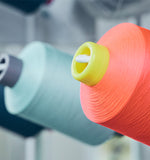Compression stockings, also known as support stockings, are designed to improve blood circulation and relieve discomfort in your legs. But who can benefit from them and how do they actually work? In this article, we’ll cover everything you need to know about compression stockings: how they work, their benefits, possible side effects, and more.

What are support stockings?
Support stockings are specially designed to apply graduated pressure to your legs. The pressure is highest at the ankles and gradually decreases towards the knee. This helps blood flow more efficiently back to the heart. With improved circulation, your muscles get more oxygen-rich blood, and waste products are removed more quickly. This reduces swelling and helps prevent blood clots.
Why do people wear support stockings?
There are a few reasons why people wear support stockings. Most people use them for either relief from symptoms or as a preventive measure.
For relief from symptoms:
- For heavy, swollen, or restless legs
- For conditions like varicose veins or thrombosis
- To reduce swelling during pregnancy
- For specific sports injuries, like shin splints
Preventively:
- To prevent varicose veins and swelling (during pregnancy)
- To reduce the risk of thrombosis while traveling
- To prevent injuries during sports
- To lessen discomfort from prolonged sitting or standing at work
Wearing support stockings in the summer
Support stockings can sometimes feel less comfortable in the summer. Want to know how to wear them best on hot days? Check out our blog on summer support stockings for tips and advice.
Side effects and disadvantages of support stockings
Although support stockings offer many benefits, they can also have some side effects. These might include:
- Skin irritation or itching from prolonged skin contact
- Discomfort from wearing the wrong size
- Allergic reactions: some people may be allergic to the material used in the stockings
Support stocking classes
Support stockings come in four pressure classes, depending on the strength of the compression:
- Class 1: for tired or heavy legs
- Class 2: for moderate symptoms and often custom-fitted
- Class 3 & 4: for severe conditions like advanced varicose veins or lymphedema
Our compression stockings are designed with compression class 2, making them particularly effective for alleviating moderate issues such as tired or heavy legs. This class provides an optimal balance between comfort and support.
Measuring for support stockings
It’s best to measure your size in the morning, before any swelling occurs. Use a tape measure to measure the circumference of your ankle and calf. Then compare your measurements with the sizing chart to find the right size.
Putting on support stockings
Putting on support stockings can be tricky. Here are some tips to make it easier:
- Trim your toenails short and avoid sharp edges
- Moisturize your skin (when you’re not wearing the stockings, for example before bed)
- Use stocking donning aids if needed
The benefits of support stockings
Support stockings offer a range of benefits. They can help prevent varicose veins, reduce swelling, lower the risk of thrombosis during long trips, enhance athletic performance, and support recovery after injuries or surgeries. Additionally, they provide relief from discomfort caused by prolonged sitting or standing, and contribute to overall leg comfort and well-being.











